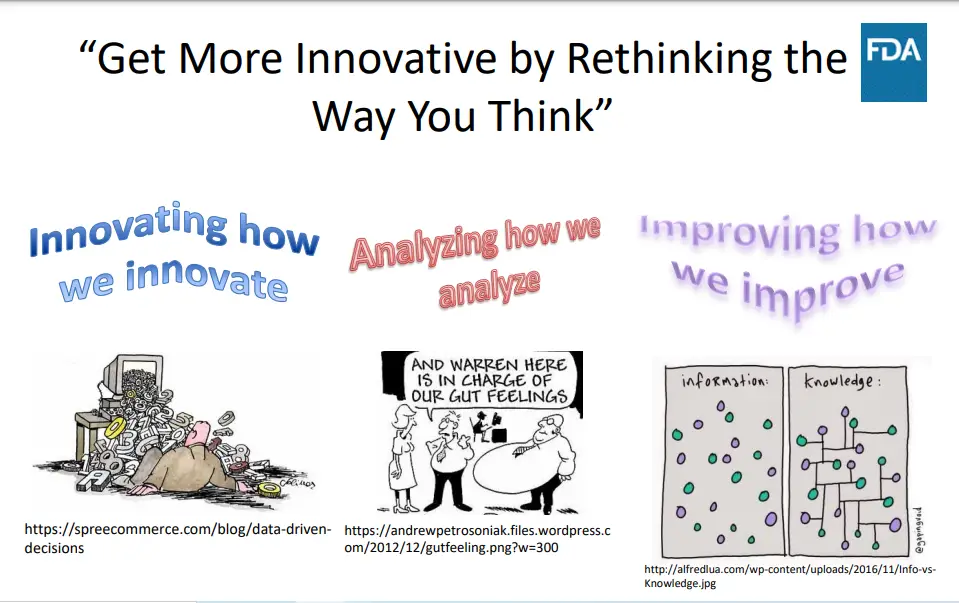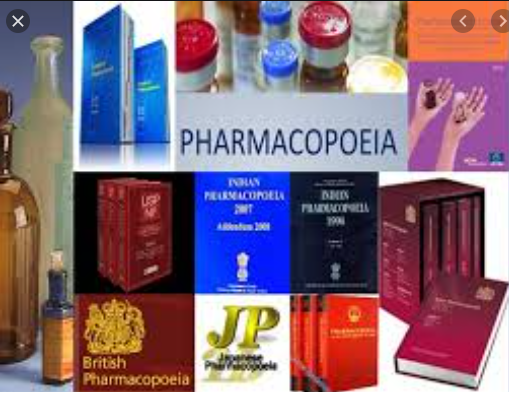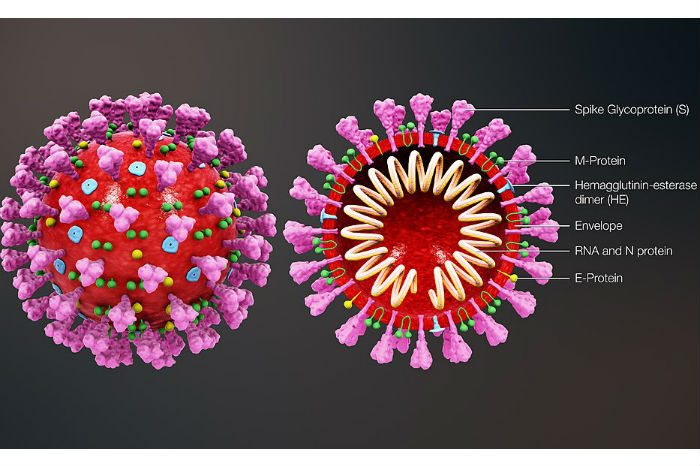USFDA Guidance on Quality Metrics
Quality metrics are used throughout the drugs and biologics industry to monitor quality control systems and
processes and drive continuous improvement efforts in drug manufacturing. These metrics can also be useful to
FDA: to help develop compliance and inspection policies and practices, such as risk-based inspection scheduling of
drug manufacturers; to improve the Agency’s ability to predict, and therefore, possibly mitigate, future drug
shortages; and to encourage the pharmaceutical industry to implement state-of-the-art, innovative quality
management systems for pharmaceutical manufacturing.
This revised guidance includes an explanation of how the Center for Drug Evaluation and Research (CDER)
and the Center for Biologics Evaluation and Research (CBER) intends to utilize submitted data and quality
metrics to help ensure that their policies and practices continue to support continuous improvement and
innovation in the pharmaceutical manufacturing industry.
In order to achieve these goals, FDA is initiating a quality metrics reporting program. As described in this
guidance, FDA is initiating a voluntary reporting phase of the FDA quality metrics reporting program. In the
voluntary reporting phase of the program, FDA expects to learn more about a limited set of quality metrics,
and associated analytics, and improve the FDA quality metrics reporting program.
Objectives
- Pharmaceutical Quality for the 21st Century.
- Why Quality Metrics (QM)?
- The initial draft of the QM Guidance.
- Key Features of the QM Revised Draft Guidance.
- Phased-In Approach and Benefits to Participants.
- How FDA Intends to Use Metrics Data.
- Encourage the use of modern, more efficient manufacturing technologies.
- Develop approaches to increase regulatory flexibility for postapproval changes.
- Focus on robust analytics and surveillance techniques to monitor the state of manufacturing in the pharmaceutical industry.
Vision
“A maximally efficient, agile, flexible pharmaceutical manufacturing sector that reliably produces high-quality drugs without extensive regulatory oversight.”
Desired State of Manufacturing
Manufacturers have extensive knowledge about the critical product and process parameters and quality attributes
• Manufacturers strive for continuous improvement.
• FDA role: Initial verification, a subsequent audit.
• Minimal manufacturing supplements are needed for post-approval changes.
Existing Quality Metrics Programs
Many manufacturing establishments currently use quality metrics as a part of the process validation lifecycle and pharmaceutical quality system (PQS) assessment
• Current good manufacturing practice (CGMP) for human drugs requires manufacturers to have an ongoing program to maintain and evaluate product and process data that relate to product quality
• Continued process verification includes a Periodic Product Review (PPR):
- Conducted at least annually.
- Data collected includes relevant process trends and the quality of incoming materials or components, in-process materials, and finished products.
Programs should be tailored to include those metrics that the manufacturer finds useful in performing this product- and establishment-specific evaluations.
Robust Product/Site Measurement Program
Other Metrics Likely to be Useful
- Lot acceptance rate
- Invalidated and validated OOS rate
- Product quality complaint rate
- Deviations without an assigned root cause.
- Periodic Product Review Completion
- Right-First-Time
- Quality culture
- Process performance and capability
- Senior management’s commitment to quality
- CAPA effectiveness (retraining, preventive actions)
- Reliability of drug availability
- Unplanned/planned equipment/facility maintenance rate
Quality Metrics Programs Indicators of Maturity
- Identifying existing problems vs. predictive analytics.
- Importance of quality culture.
- What are useful product- and site-specific metrics?.
- How committed is senior management to overall quality?.
- How committed is the entire staff to quality culture?.
- Does the program improve over time?
Why Quality Metrics?
Industry
• Enables continual improvement of the process performance and product quality
• Supports continual improvement of the pharmaceutical quality system
• Important element of oversight and control over the manufacture of drugs to ensure quality
FDA
• Additional insight into the state of quality of the product and facility.
• More quantitative and objective measures of quality at the product, site, and system levels.
• Enhance risk-based surveillance inspection and scheduling model.
• Improve the effectiveness of inspections.
• Help to identify factors leading to supply disruption.
• Gain insights/trends regarding the state of quality across the pharmaceutical industry.
Patients
• More reliable patient access to important therapies
– Commitment to ongoing improvement by the industry leads to more robust manufacturing processes.
– Fewer recalls.
– Fewer quality-related drug shortages.

USFDA Guidance on Quality Metrics
Request for metrics data
• Product reports
• FDA would use the data to calculate metrics:
– The lot Acceptance rate
– Product Quality Complaint rate
– Invalidated Out-of-Specification (OOS) rate
– Annual Product Review (APR) or Product Quality Review (PQR) On Time rate
• Public comment requested on several optional metrics
– Senior management engagement
– CAPA effectiveness
– Process capability/performance
– Public Docket
• Significant comments received
– Technical comments regarding proposed metrics and definitions
– Concerns regarding the burden of data collection/formatting/submission
– Legal concerns regarding the proposed mandatory program
– Suggestions to take a phased-in approach to allow learning by both industry and FDA.
Key Features
Mandatory → Initial Voluntary Phase
• Product- OR site-based reporting
• Limited set of 3 metrics related to batch manufacturing, laboratory robustness,and the voice of the patient or customer (quality complaints)
• Technical edits and examples
• Incentives for participation
Submission of Information is Voluntary
During the voluntary phase of the reporting program, FDA does not intend to require the submission of this
information
• FDA does not intend to take enforcement action based on errors in a quality metrics data submission made during this voluntary phase of the reporting program provided the submission is made in good faith.
Voluntary vs. Mandatory
• Extent to which FDA can achieve its goals for the QM program will be largely driven by the extent of
participation
– Large body of data is needed to draw the most meaningful conclusions about the quality of a site or product
• Developed additional incentives for reporting.
Quality Metrics in the Short Term
Test and improve the electronic portal submission process
• Incentives for establishments going “above and beyond”
– Additional opportunities for feedback from participating establishments
– Quality Metric Reporters List
– Enhance pre-market and post-market review program
– Reduction in inspection frequency based on reporting
• Improve and mature the program based on feedback and analytics
– Publish a summary of initial reports
• Ensure program supports, not deters, emerging technology
– Measuring and assessing quality culture.
– Ongoing improvement in definitions and examples.
– Continuing discussions with a range of industry groups/representatives.
• Non-application products.
• Contract manufacturers.
• Active ingredient manufacturers.
– Evaluate additional sources of data to study quality metrics.
Quality Metrics in the Long Term
Predictive analytics
– Correlation with FDA data (e.g., inspection outcomes, recalls,FARs)
– Drug supply disruption
• Continue to recognize participating establishments
– Quality Metric Reporters List (?)
– Enhance premarket and postmarket review program (e.g., postmarketing change reporting program)
– Potential reduction in inspection frequency based on data
• Continue to encourage emerging technology
• Other incentives?
- Voluntary reporting alone may not be sufficient to accomplish FDA’s goals for the program
- The greater net benefit for FDA and industry likely to result from a fully operational program
– Incorporate initial learnings
– Fuller participation. - Continuing to plan for notice and comment rulemaking.
Summary
• Quality Metrics play an important role in the desired state of pharmaceutical quality and regulation
–minimal but effective regulatory oversight that results in quality drugs available for patients
• Development of the FDA program is a journey that has reached an important next step
• In collaboration with participating industry stakeholders, we will incorporate learnings from this initial phase of the program to more fully realize the potential of quality metrics.


![Stability (ICH Q1A) Quiz 1 4 [ays_quiz id='19']](https://pharmaguidances.com/wp-content/uploads/2023/08/quiz.jpg)
